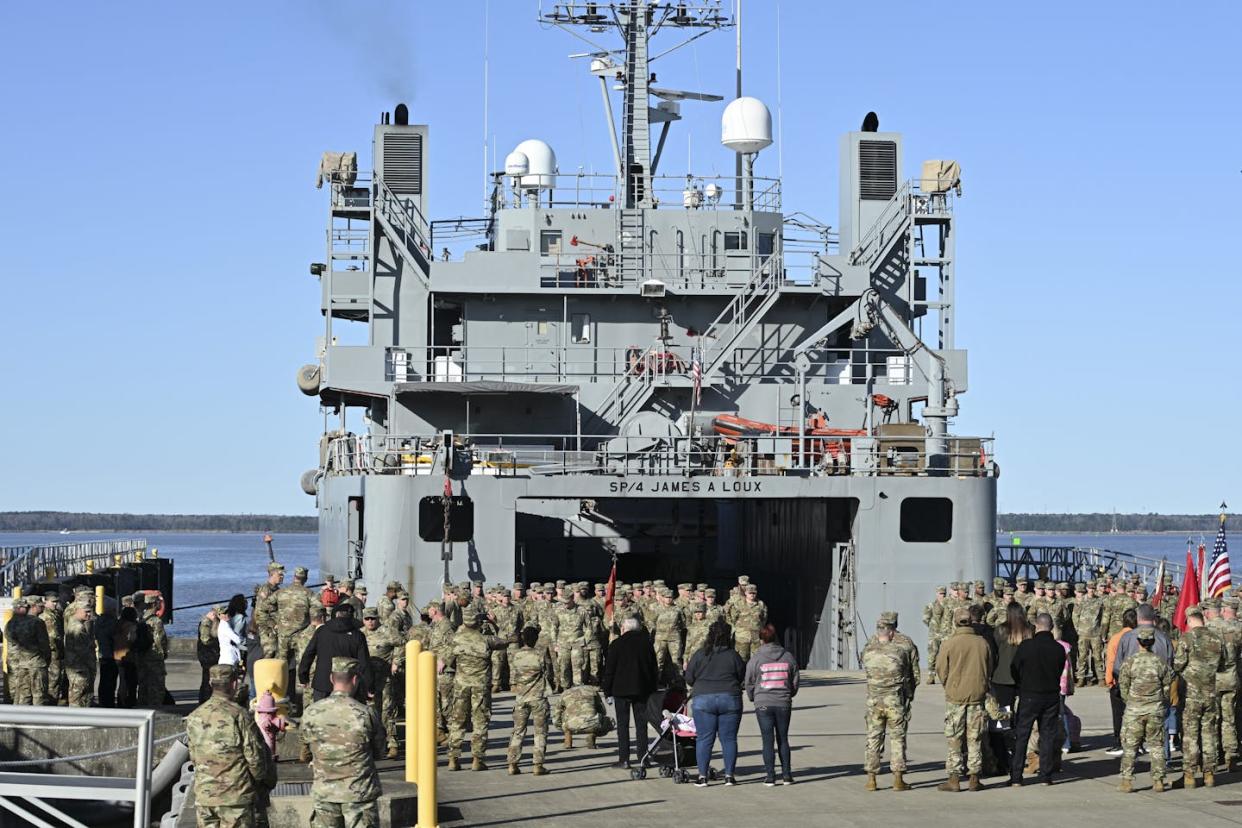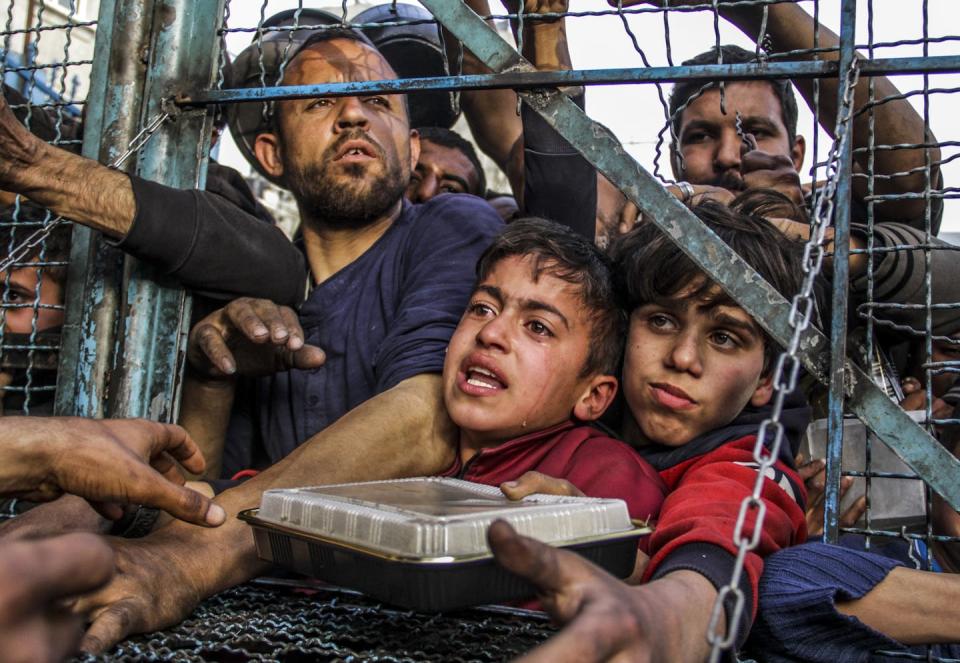A new US-run pier off Gaza could help deliver 2 million meals a day – but it comes with security risks

The U.S. has dispatched eight Army and Navy vessels from Virginia to build a temporary pier off the coast of the Gaza Strip. The aim of this work: to supply food and other necessary items for Palestinians as the war between Israel and Hamas continues and the resulting humanitarian crisis worsens.
Even before Oct. 7, 2023, and the massacre by Hamas of Israeli citizens that sparked the war, about 80% of Palestinians in Gaza relied on foreign humanitarian assistance to meet their basic needs, including food. Now, the United Nations is warning that half of Palestinians in Gaza face famine within the next few months.
The new pier, which is expected to be operational sometime in May 2024, could help deliver 2 million meals a day to Gaza’s estimated 2.2 million residents.
A complex set of factors, including limited entryways into Gaza, Israeli restrictions on what enters Gaza, poor road conditions and security concerns, have resulted in aid groups being unable to deliver sufficient amounts of food to people in Gaza. Israel says it is not directly obstructing aid deliveries, but some critics – including South Africa, which is bringing a genocide case against Israel before the International Court of Justice – disagree.
The U.N. is pressing for Israel to approve food truck convoys run by the main U.N. aid agency supporting people in Gaza, known by the acronym UNRWA, which Israel announced on March 25, 2024, that it would no longer work with.
Feeding the entire population of Gaza would require a ninetyfold increase in daily deliveries of food by air drops and 500 daily trucks, instead of the dozen or so vehicles that enter Gaza each day.
As a former White House national security aide and former U.S. diplomat, I understand the internal workings of the civilian-military sides of constructing a pier and other projects like this during war. I also am aware of the security dimensions that accompany this kind of endeavor.
The temporary pier could offer a partial solution to averting famine in Gaza. But the operation also involves complex logistics, high costs and security risks.

How the floating pier works
About 1,000 U.S. soldiers will construct this temporary port, which will serve as a relay site for food that comes by ship from Cyprus, before the goods are ferried by water into Gaza.
No U.S. soldiers are expected to set foot in Gaza. Government contractors will reportedly be responsible for moving products by boat across the approximately 3 miles that will separate the pier from Gaza.
What will the finished project look like?
Imagine standing on a beach and there is a long plank that one can walk out from the shoreline of the beach over the water. This leads to a large, floating pier that is surrounded by boats.
The components of this Gaza project are similar: a floating pier, an 1,800-foot-long (549-meter-long) causeway attached to the shore, boats pulled up alongside to help with sorting and moving food, and barges to transport aid from the pier.
Large ships must be able to unload supplies onto the pier, including tons of food, water and medicine. Smaller boats will need to get the aid closer to the shore because Gaza has lost the functions of its port, and its waters are too shallow for large vessels. The new pier is the point between those two activities.
Not the first time the US has used this kind of operation
The Pentagon has erected temporary piers for decades, both for military support during wartime and emergency humanitarian assistance in times of conflict.
This work is done through a 30-year-old program that integrates the Navy and the Army. But as far back as World War II, the United States’ Allied forces landing on Normandy was aided by the construction of a floating dry dock pier.
During Operation Desert Storm in 1991 – a military operation to oust Iraqi forces from Kuwait – the U.S. created a floating pier for military purposes because the Iraqis had mined Kuwait’s port and the U.S. often resupplied troops on the ground via the sea.
Most often, floating piers are built to create a port after or during a crisis.
The U.S. built a floating pier in the Port-au-Prince Bay following the 2010 Haiti earthquake. This allowed them to get food and medicine to help humanitarian agencies that could not travel on badly damaged roads get food and medicine to civilians in need.
The U.S. military continues to build floating piers in training missions, like one it temporarily constructed off South Korea in 2015 to test cargo deliveries in the event of a crisis.

Security risks persist
Security is of paramount concern with this type of construction during an active war.
The Biden administration has made clear from the start of the war that there would be no U.S. boots on the ground in Gaza, but this mission brings troops dangerously close to the action.
Israeli officials have given the green light to Biden to pursue this operation, and there will be security checks of ships in Cyprus before they head to the port, which should quicken the unloading. Reports from unnamed defense officials say that Israeli soldiers will also surround the pier in an unspecified position to keep them safe.
But the pier could become a target for Hamas or other Iranian-backed proxy groups in Gaza or elsewhere that still have mortar, rockets, drones and other ways to harass or attack the ship.
It also could lead to stampedes for the aid. Twelve people drowned off Gaza’s northern coast trying to retrieve food from the Mediterranean Sea on March 26, 2024.
An unknown cost
Major military operations are expensive, and there is no exact, publicly available price tag for the Gaza pier project.
To me, there is a certain irony in the fact that Israel is the largest recipient of U.S. foreign aid, including major weapons systems, and the U.S. is now spending money on building a pier in order to deliver aid to the very people that are harmed by this U.S. ally using those weapons.
This article is republished from The Conversation, a nonprofit, independent news organization bringing you facts and trustworthy analysis to help you make sense of our complex world. It was written by: Tara Sonenshine, Tufts University
Read more:
Delivering aid during war is tricky − here’s what to know about what Gaza relief operations may face
Tara Sonenshine does not work for, consult, own shares in or receive funding from any company or organization that would benefit from this article, and has disclosed no relevant affiliations beyond their academic appointment.

